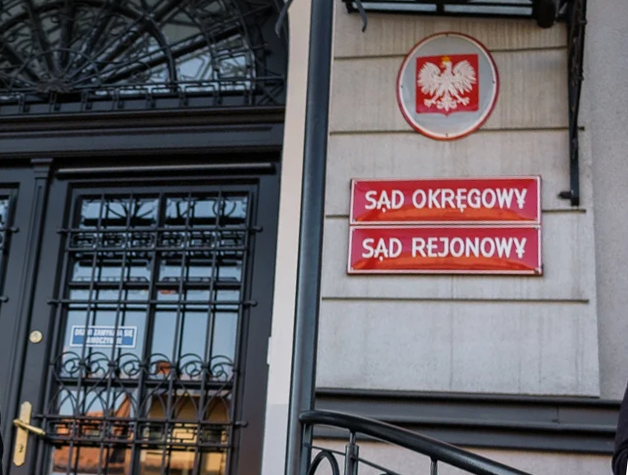
Пчелы стоят за нашей едой и натуральными лекарствами, и они исчезают
Автор: Эмма Сатти, The Epoch Times (выделено нами),
Пчелы умирают — и с пугающей скоростью.
В период с 2023 по 2024 год американские пчеловоды потеряли примерно 55,1% своих колоний, что является худшей потерей за более чем десятилетие и почти на 15% выше, чем в среднем за предыдущие 13 лет.
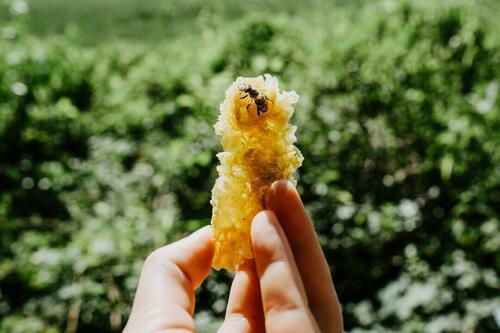 Лиза Шетцле / Getty Images
Лиза Шетцле / Getty ImagesПчелы опыляют три четверти фруктов, овощей и орехов, которые мы едим, и многие из нас полагаются на продукты пчеловодства. Если пчелы исчезнут, страшно думать обо всем, что мы можем потерять. И некоторые говорят, что если пчёлы уйдут, мы тоже уйдём.
Джефф Петтис, президент Apimondia Международной федерации пчеловодов Ассоциации — суммируют преимущества для здоровья, которые пчелы предлагают людям одним словом: огромные.
Хотя две трети нашего рациона составляют углеводы, такие как рис, пшеница и кукуруза, которые опыляются ветром, а не насекомыми, многие другие важные продукты требуют пчел.
"Мы не будем голодать, если у нас не будет пчел. Но буквально все, что вы можете придумать, это питательные фрукты, орехи и овощи — все это, мы назовем это опылением животных. Подавляющее большинство из них опыляется медоносными пчелами или другими дикими пчелами, - сказал он.
Пчелы опыляют
Райан Беррис — пчеловод третьего поколения и президент Ассоциации пчеловодов штата Калифорния. Многие люди не понимают, сколько фруктов и овощей мы едим, зависит от пчел для опыления.
"Самым большим, очевидно, для пчеловодов, является миндаль.. А затем у вас есть такие вещи, как черника, арбузы и вещи, о которых вы не думаете, такие как лук и морковь — все это требует опыления. По оценкам, есть 100 культур, которые требуют опыления, - сказал он.
Двадцать тысяч видов пчел украшают нашу планету, а 4000 видов являются родными для Соединенных Штатов. Пчелы являются одними из самых известных и любимых опылителей. Каждый третий укус пищи, который вы едите, зависит от опылителей, а пчелы опыляют каждый четвертый укус.
Помимо своей критической роли опылителей, пчелы также дарят нам мощные продукты, такие как мед, пчелиная пыльца, прополис и королевское желе, каждый из которых обладает питательными и лекарственными преимуществами.
Медовый.
Древние египтяне были первыми пчеловодами в мире. Они изготавливали глиняные ульи и перевозили их на плотах вдоль Нила, позволяя пчелам опылять любые цветы в сезон. Пчелы были глубоко почитаемы, а мед считался священным.
На протяжении всей истории мед играл много ролей — он использовался в религиозных ритуалах, медицине, валюте и приношениях богам. Когда археологи обнаружили гробницу царя Тутанхамона, они обнаружили запечатанную банку меда возрастом более 2000 лет. Поскольку мед не портится, его можно безопасно есть.
Мед предлагает сокровищницу целебных свойств. Он успокаивает кашель, приносит пользу пищеварению и здоровью полости рта, лечит запор и диарею, защищает сердце и обладает противораковыми свойствами - в дополнение к тому, что он является антибактериальным, противовоспалительным, противогрибковым и мощным антиоксидантом.
Яна Шмидт - сертифицированный натуропатический врач и главный травник, который держит пчел. Она говорит, что не все сорта меда созданы равными, и знание того, откуда берется мед, имеет решающее значение, поскольку многие сорта, купленные в магазине, синтетически сделаны или искусственны. Если вам нужны хорошие вещи, идите за сырым местным медом — в идеале прямо от пчеловода.
«Разновидности даркера имеют более высокие антиоксиданты, чем более легкие сорта», — отметила она, говоря, что пчелы делают более темные типы в зимние месяцы, когда холодно, и им нужно больше питания.
Она говорит, что мед, добавленный в чай перед сном, может помочь вам уснуть — то, что она делала для своих детей, когда они были маленькими.
"Он помогает регулировать сон, но также защищает зубы от бактерий, которые вызывают кариес, который кажется сумасшедшим, потому что он сладкий. Вы думаете, что это вызовет кариес, но на самом деле это защищает зубы.— сказала она The Epoch Times.
Исследования показали, что антибактериальные свойства меда борются с вредными бактериями, такими как сальмонелла и кишечная палочка. Кроме того, мед был изучен на предмет его потенциальных преимуществ против рака, включая рак молочной железы, печени и колоректального рака, где он показал цитотоксическое воздействие на раковые клетки, способность ингибировать рост раковых клеток и предотвращать образование новых кровеносных сосудов, которые опухоли должны расти.
Сырой мед является потенциальным источником спор Clostridium botulinum, которые могут вызвать ботулизм, особенно у детей. Поэтому рекомендуется, чтобы младенцев в возрасте до одного года не кормили сырым медом.
Пчелы являются плодовитыми производителями разнообразных продуктов с многочисленными потенциальными преимуществами для здоровья.
Пчелиная пыльца
Медоносные пчелы собирают пыльцу с цветов и смешивают ее со своей слюной, которая содержит специальные ферменты. Затем они хранят его в гребневых клетках внутри ульев. После того, как пыльца хранится и обрабатывается в улье, ее называют мякотью или амброзией — жизненно важной пищей для пчел, содержащей белки, жиры, витамины и минералы, в которых они нуждаются. Когда хлеб хранится, он подвергается естественному процессу ферментации, который сохраняет его и облегчает усвоение питательных веществ.
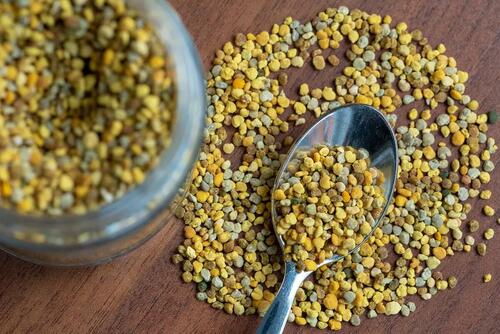 Пчелиная пыльца. hanif66/Shutterstock
Пчелиная пыльца. hanif66/ShutterstockДля меня это идеальный мультивитамин Бога, потому что в нем есть все витамины и минералы, известные своим питанием. Он содержит около 96 различных питательных веществ и биодоступной энергии. Это антибактериальный, противогрибковый, противовирусный и самый усвояемый белок на унцию, чем что-либо еще, - сказал Шмидт.
Пчелиная пыльца предлагает источник устойчивой энергии в течение дня, а не всплеск, как вы могли бы получить от сахара или кофеина.
"Я не пью кофе и ничего подобного. Я просто беру свою пчелиную пыльцу утром, и я готов идти.- Она сияла.
Растет научный интерес к пчелиной пыльце, особенно из-за ее антимикробных свойств, которые могут бороться с широким спектром патогенов, включая бактерии и грибы. Эта способность примечательна тем, что некоторые бактерии становятся устойчивыми к антибиотикам. Пчелиная пыльца, по-видимому, способна бороться с микробами, не создавая сопротивления, что, по мнению некоторых ученых, связано с тем, что она содержит несколько различных природных соединений, которые работают синергетически. Пчелиная пыльца также поддерживает хорошие бактерии организма, принося пользу здоровым кишечным микробам — ведя себя как пребиотик.
Шмидт добавляет, что, как специалист по естественной фертильности, пчелиная пыльца является ее добавкой к фертильности номер один.
«Если задуматься, то это плодородие растений. Почему это не плодородие для нас? Иногда это все, что нужно. Пара начинает принимать пчелиную пыльцу, и бам, они плодородны. Это было довольно весело быть частью. "
Исследования показали, что пчелиная пыльца имеет другие широкие медицинские преимущества для человека, в том числе:
- Польза расстройств метаболического синдрома
- Предотвращение ожирения
- Борьба с заболеваниями печени
- Кардиопротекторные эффекты
- Понижение мочевой кислоты
- Детоксикация (на основе исследований на животных)
- Регулирование функций яичников
- Устранение аллергических реакций
- Улучшение пищеварения и всасывания
- Стимулирование иммунной системы
- Улучшение когнитивной дисфункции
«Пчелам требуется восемь часов в день, от двух до четырех недель, чтобы собрать одну чайную ложку пыльцы», — сказал Шмидт. Они так много работают. Они посещают более 2 миллионов цветов, чтобы получить одну чайную ложку пыльцы. Это довольно удивительно. "
Прополис
Прополис, также известный как «пчелиный клей», представляет собой смолистое вещество, которое пчелы собирают из различных видов растений. Пчелы используют его в качестве строительного материала для улья. Он уплотняет отверстия и трещины, улучшает структурную целостность, сглаживает внутреннюю поверхность улья, поддерживает постоянную внутреннюю температуру 95 градусов по Фаренгейту и защищает улей от элементов, хищников и патогенов. После затвердевания он помогает создать антисептическую внутреннюю среду.
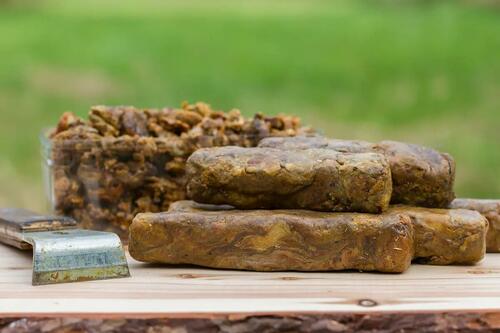 Пчелиный прополис. Игорь Хвоздецкий / Shutterstock
Пчелиный прополис. Игорь Хвоздецкий / ShutterstockШмидт предлагает длинный список преимуществ прополиса, особенно для мозга. К ним относятся уменьшение воспаления в мозге и окислительный стресс, помощь в снижении токсических эффектов метилртути — высокотоксичной формы ртути — и алюминия в мозге, повышение синаптической эффективности и защита от нейродегенерации и когнитивных нарушений.
Она добавляет, что это отличный пребиотик и отлично подходит для здоровья кишечника.
"Всякий раз, когда есть инфекция, и вы не совсем уверены, что это такое, я обычно хожу в прополис - это просто повышает вашу иммунную систему, как ничто другое, что я когда-либо использовал.- сказала она.
Исследования показали, что это удивительное вещество имеет много применений для здоровья человека и обладает следующими лечебными свойствами:
- антиоксидант
- противовоспалительный
- Антиульцер
- противораковый
- Иммуномодулирующий
- Нейропротектор
- противоаллергический
- кардиозащитный
- Антидиабет
Исследования на людях и животных показали, что прополис обладает мощными целебными свойствами, полезными при нескольких острых и хронических заболеваниях — от аутоиммунных заболеваний, таких как диабет 2 типа и ревматоидный артрит, до сердечно-сосудистых заболеваний, рака и COVID-19.
В рандомизированном контролируемом клиническом исследовании 2021 года 124 госпитализированных пациента с COVID-19 были разделены на три группы. ТТДве группы получали бразильский зеленый прополис — 400 или 800 миллиграммов в день — в дополнение к регулярному лечению.
Исследователи обнаружили, что пациенты, которые получали прополис, были выпущены из больницы на пять-шесть дней раньше, а те, кто получал 800 мг ежедневного прополиса, имели меньшее повреждение почек, связанное с COVID-19. Таким образом, авторы исследования пришли к выводу, что прополис является безопасным и эффективным вспомогательным средством для пациентов с COVID-19.
Королевский желе
Люди использовали королевское желе в качестве мощного лекарства на протяжении тысячелетий. Он чрезвычайно популярен и высоко ценится в китайской медицине в древние времена и сегодня. Королевское желе является общим тоником, который способствует устойчивому развитию костей, зубов и мозга. Это также помогает повысить фертильность для женщин и успокоить симптомы менопаузы.
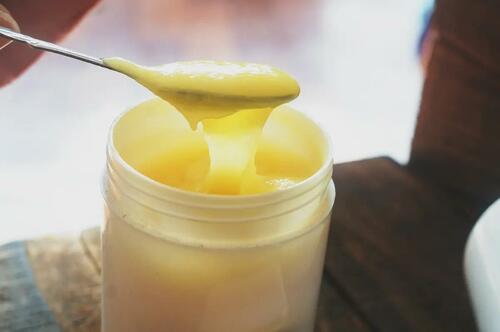 Королевское желе. Бин Чжу/Шуттерсток
Королевское желе. Бин Чжу/ШуттерстокКоролевское желе - это белое молочное вещество, выделяемое рабочими пчелами для кормления личинок пчелиной королевы. Рабочие личинки пчел получают другой тип — рабочее желе, которое содержит меньше питательных веществ. Согласно одному исследованию, высококачественное королевское желе, подаваемое королеве, позволяет ей прожить долгую жизнь (до пяти лет) и ежедневно откладывать 2500 яиц. Для сравнения, рабочие пчелы живут только около 45 дней и, хотя самки, не размножаются.
Богатое белками, углеводами, жирами, витаминами и минералами, королевское желе является жизненно важным источником пищи для пчел. Сегодня люди используют его в качестве пищевой добавки, лекарства и ингредиента в косметических и косметических продуктах.
Исследования показали, что королевское желе обладает следующими лечебными свойствами:
- антиоксидант
- антилипидемический
- антипролиферативный
- Антимикробный
- Нейропротектор
- противовоспалительный
- Иммуномодулирующий
- Старение
- Эстрогенная деятельность
Несмотря на свою лекарственную пользу, Шмидт говорит, что не рекомендует королевское желе из-за того, как его собирают, так как оно вредит пчелам и улью только для сбора небольшого количества.
«Мне просто не нравится практика в целом... Я чувствую, что это делает шаг за пределы того, что мы должны делать, чтобы хорошо жить с пчелами.
В исследовании 2023 года изучалось влияние королевского желе на ферменты печени и гликемические индексы. Исследователи обнаружили, что королевское желе не оказывает существенного влияния на гликемический профиль или функцию печени у взрослых. Однако в исследованиях с более длительной продолжительностью 8 и более недель, а также в исследованиях, проведенных в «нездоровых» популяциях, наблюдалось значительное снижение уровня глюкозы в крови натощак — измерение уровня глюкозы в крови после голодания. Более высокие уровни глюкозы в крови натощак являются характерным признаком как преддиабета, так и диабета 2 типа.
Почему пчелы умирают
Мы все слышали о тревожном снижении численности пчел в последние годы.
Петтис говорит, что причины, по которым пчелы умирают, настолько огромны, что они многогранны и сложны.
Во-первых, пчелы теряют свою естественную среду обитания. Существенной причиной этого является рост монокультуры, когда фермеры выращивают только один вид сельскохозяйственных культур на своих полях. Отсутствие разнообразия ограничивает цветы, доступные для пчел, что затрудняет получение всех питательных веществ, необходимых для поддержания здоровья и процветания.
"Округление Готовые культуры, такие как кукуруза, соя, все это - они создают очень стерильные поля, поэтому нет сорняков - и многие из этих сорняков действительно хороши для пчел.- сказал он.
Петтис говорит, что вторая причина — это воздействие пестицидов, а третья — вредители и заболевания, поражающие пчел. Он говорит, что все они объединяются по-разному, чтобы повлиять на пчел и уменьшить их количество, что делает пчеловодство более сложным.
«В США появилось множество экзотических вещей — два паразитических клеща, а затем жуки из Африки, и теперь у нас есть некоторые инвазивные шершни, прилетающие из Азии. Это просто одно за другим, - сказал он.
"Очень трудно выжить, когда все эти стрессоры выстраиваются в очередь, один за другим."
Некоторые читатели могут задаться вопросом о расстройстве коллапса колонии.
«На самом деле я был очень вовлечен в коллапс колонии, которой сейчас 20 лет, и мы никогда не придумали ничего окончательного. Это была просто комбинация вещей, которые убивали управляемых пчел, - сказал Петтис.
Клещи, особенно клещ варроа, который метко называют разрушителем Варроа, стали огромной проблемой для пчеловодов.
"Клещ варроа — разрушитель варроа — является основным убийцей медоносных пчел, потому что они питаются пчелой по мере ее роста.- сказал Беррис.
Эти крошечные паразитические клещи питаются пчелиным жиром и кровью, которые нуждаются в энергии и здоровой иммунной системе. Они также распространяют вирусы, особенно деформированный вирус крыла, который заставляет пчел рождаться с сморщенными крыльями, которые никогда не летают.
Беррис добавляет, что федеральные и государственные регулирующие органы не хотят, чтобы медоносные пчелы находились на общественных землях, поскольку они опасаются, что они могут навредить местным опылителям, хотя он отмечает, что у них нет доказательств в поддержку этих опасений.
Он говорит, что они спорят о проблемах предложения и спроса на продукты питания, не учитывая, что местные опылители и медоносные пчелы имеют разные привычки питания.
"Они не учитывают размер пчелы, размер местного опылителя, размер их языков и то, как они извлекают нектар.- сказал он.
Пестициды, которые включают инсектициды и гербициды, также вредны для пчел.
«Раундап и другие убийцы сорняков, которые содержат глифосат, невероятно вредны для нашего организма, а также для пчел», — сказал Шмидт.
Относительно недавний класс инсектицидов, называемых неоникотиноидами, является наиболее широко используемым инсектицидом в мире и, возможно, одним из самых смертоносных. Они работают, делая каждую часть обработанного растения токсичной, отравляя почву, окружающую воду и дикую природу. Они влияют на нервную систему пчел, мешая их способности учиться, запоминать и ориентироваться, а это означает, что многие пчелы не могут вернуться в улей и в конечном итоге умирают.
С момента их введения в последние два десятилетия широкое использование неоникотиноидов сделало сельское хозяйство США все более разрушительным для жизни насекомых. Неоникотиноиды ответственны за 92% этого увеличения опасности для насекомых.
Эти смертоносные инсектициды убивают не только пчел. Неоники связаны с потерями птиц и рыб и врожденными дефектами у белохвостых оленей. Растущие данные также показали, что неоники влияют на здоровье человека, особенно детей. Одно исследование обнаружило неонику в моче половины детей от 3 до 5 лет, а швейцарское исследование 2020 года обнаружило неонику в каждом образце плазмы и спинномозговой жидкости детей, получающих лечение от лейкемии и неходжкинской лимфомы.
Как помочь пчелам
К счастью, есть вещи, которые мы все можем сделать, чтобы помочь пчелам и поддержать этих основных опылителей.
- Растите местные цветы и деревья, особенно те, которые цветут в течение лета, так как пчелы нуждаются в пище с весны до осени.
- Купить местный мёд, а мёд сделал 100 % в США для поддержки американских пчеловодов.
- Избегайте использования инсектицидов или пестицидов вокруг вашего двора и используйте естественные методы. Шмидт говорит, что употребление уксуса и воды с небольшим количеством соли убивает сорняки, не нанося вреда ничему другому.
- Позвольте площади вашего двора или сада быть заросшими или менее сокращенными, чтобы обеспечить пищу и места гнездования для пчел.
- Посадите пчелиный сад с местными цветами, чтобы привлечь пчел и других опылителей.
- Создайте поливную станцию для пчел с фильтрованной водой, используя глубокую пластину с галькой или мрамором рядом с цветущими растениями, чтобы дать пчелам безопасное место для питья.
- Создайте пчелиный дом, который вы можете повесить во дворе, чтобы дать пчелам место для жизни.
- Держите ульи подальше от источников излучения Wi-Fi и ЭМП, которые негативно влияют на пчел.
- Если вы заметили рой пчел на своей собственности, обратитесь в местную ассоциацию пчеловодства, университетский отдел сельского хозяйства или местный пчеловод, чтобы собрать их, а не истребитель.
- Поощряйте законодателей штата поддерживать законы, которые поддерживают и защищают пчел.
- Распространяйте информацию о пчелах и о том, как мы можем их поддержать.
Шмидт почитает крошечных опылителей, которые дают нам так много.
Вы знаете, мы используем термин пчеловодство, но я действительно чувствую, что они держат нас — как будто они знают, что делать, нам просто нужно обеспечить им хорошую среду обитания, и они делают всю работу — они просто дают и дают. "
Тайлер Дерден
Фри, 05/16/2025 - 18:40











